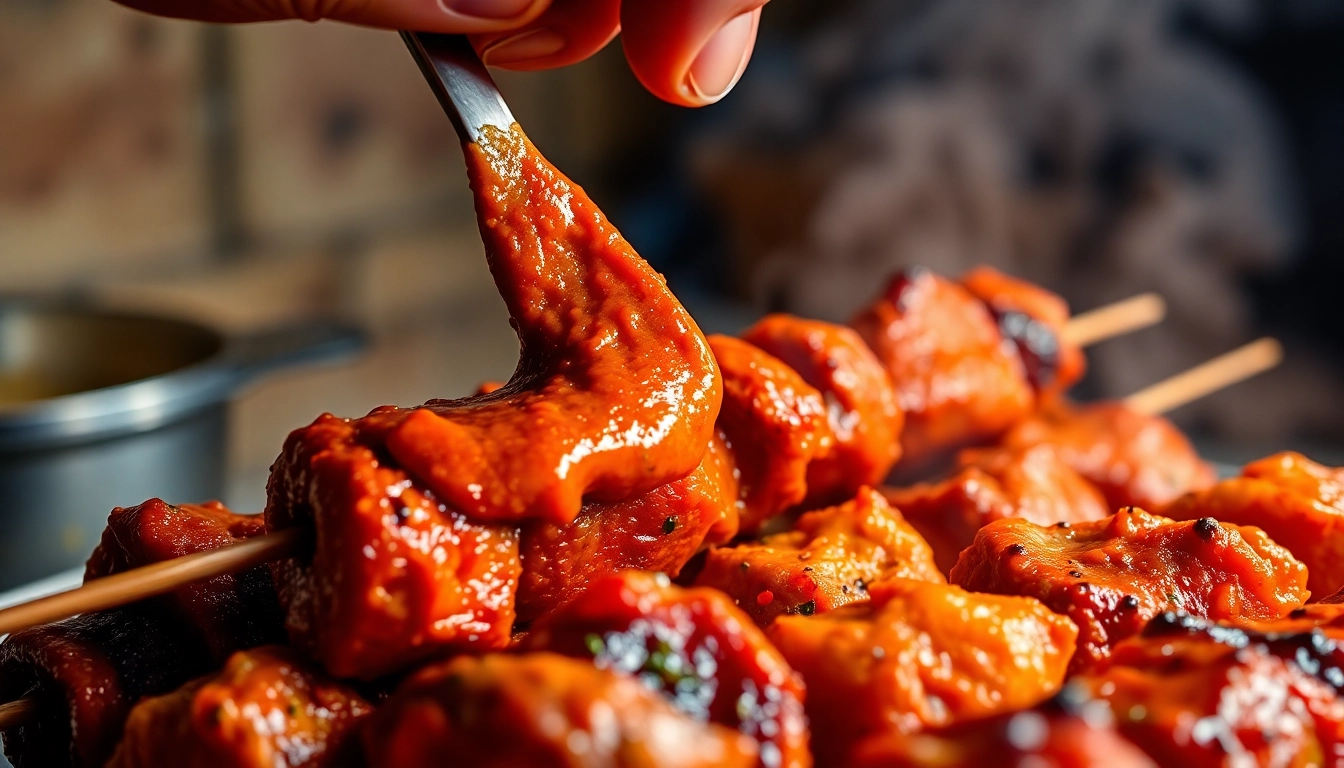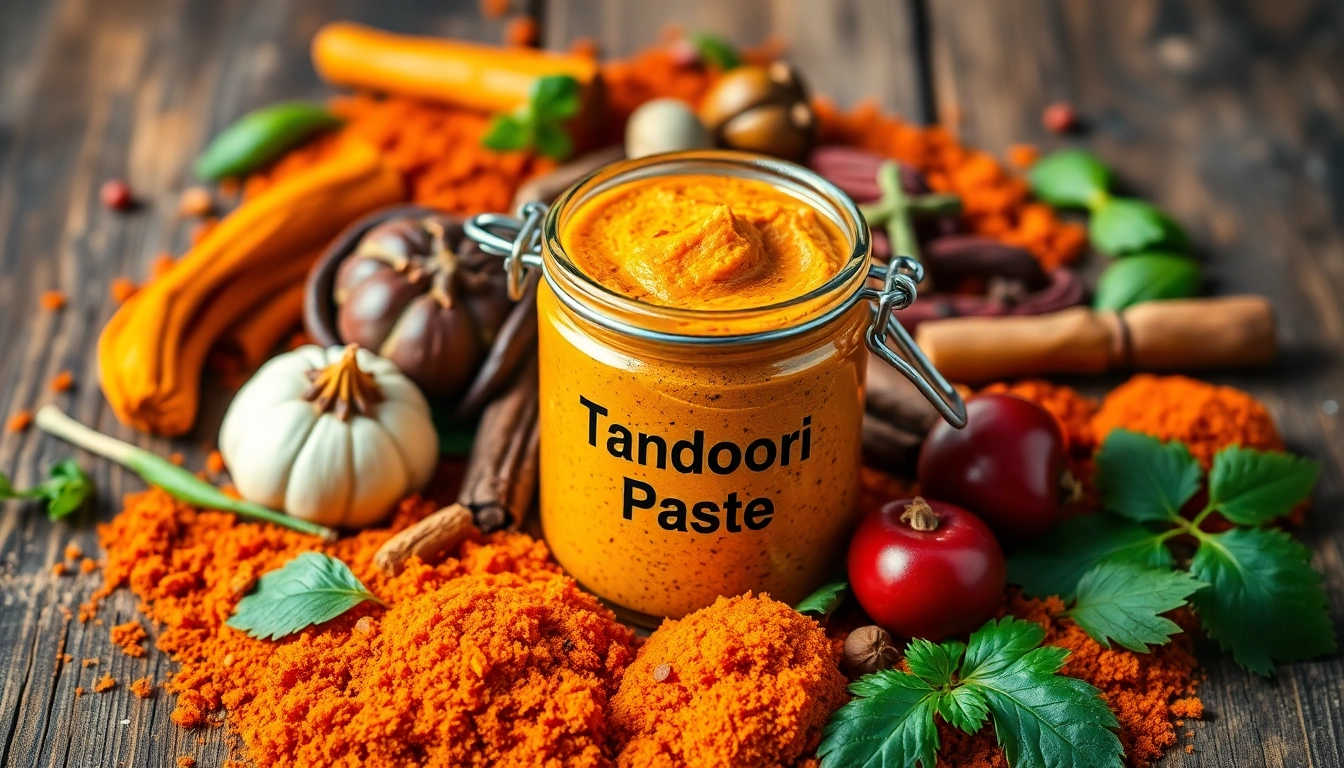Mastering Tandoori Paste: Essential Tips for Authentic Flavor and Perfect Craftsmanship
Ah, the magic of Tandoori Paste—a cornerstone of Indian cuisine that elevates dishes with its vibrant color, rich aroma, and complex flavor profile. Whether you’re a professional chef or an enthusiastic home cook, understanding the nuances of crafting and utilizing authentic Tandoori Paste is crucial to achieving culinary excellence. As a leading manufacturer and exporter of high-quality spices and processed foods, Tandoori Paste remains a vital ingredient that encapsulates centuries of culinary tradition, perfected for modern kitchens worldwide.
Understanding Tandoori Paste: Origins and Key Ingredients
Historical Roots of Tandoori Spice Blends
The origins of Tandoori Paste trace back to the flavorful tandoor cooking tradition of North India. The word “Tandoori” derives from “tandoor,” a traditional clay oven that imparts a unique smoky aroma to grilled meats and vegetables. Historically, tandoori dishes were prepared with rudimentary spice blends, gradually evolving into complex mixtures passed down through generations. These blends, initially regional and homemade, gradually gained popularity as commercial adaptations, enhancing consistency and convenience in kitchens worldwide.
Core Ingredients that Define Authentic Tandoori Paste
Authentic Tandoori Paste showcases a harmonious blend of spices, herbs, and other natural ingredients. The key components typically include:
- Red chili powder: Provides characteristic heat and color.
- Yogurt (or dried alternatives): Acts as a marinade base, tenderizing meat while adding a tangy flavor.
- Garam masala: A blend of spices such as cumin, coriander, and cinnamon.
- Garlic and Ginger Paste: Essential for depth and pungency.
- Cumin and coriander powders: For earthy undertones.
- Coriander seeds, dried fenugreek leaves, and turmeric: To enhance aroma and color.
- Optional natural flavoring agents like rose water or saffron threads to add a floral or luxurious aroma.
High-quality Tandoori Pastes emphasize natural sourcing and grinding techniques that preserve the freshness and potency of these ingredients, making them indispensable for authentic Indian cuisine.
Differences Between Homemade and Commercial Tandoori Pastes
While homemade Tandoori Pastes can be tailored to personal taste and freshness, commercial variants offer advantages in consistency, shelf life, and convenience. Homemade pastes often require fresh ingredients and time-consuming preparation but allow for customization of spice intensity and added ingredients. Commercial products, like those offered by Spice Nest, undergo rigorous quality control, ensuring uniformity in flavor, texture, and safety, certified by international standards. Choosing between the two depends on your culinary needs, volume requirements, and desired authenticity.
Choosing the Right Tandoori Paste for Your Cuisine
Factors Influencing Quality and Flavor Profile
Opting for the high-quality Tandoori Paste hinges on several critical aspects:
- Ingredients: Natural, preservative-free, and sourced from reputable suppliers.
- Color: Bright red or orange hues should come from natural powders like paprika or natural colorants, not artificial dyes.
- Flavor robustness: A well-balanced spice blend without overpowering heat or blandness.
- Packaging: Airtight, UV-protected containers to retain freshness and prevent spoilage.
Assessing Organic, Regional, and Specialty Tandoori Options
Consumers seeking healthier and regionally authentic options should prioritize organic Tandoori Pastes, free from synthetic pesticides, flavor enhancers, and artificial colors. Regional specialties, such as Rajasthani or Punjabi variations, might incorporate unique spice ratios or additional herbs, enhancing the authenticity of your dishes. Specialty pastes may include exotic ingredients like saffron or dried rose petals, elevating fine dining presentations.
Matching Tandoori Paste with Different Meats and Vegetarian Dishes
The versatility of Tandoori Paste makes it suitable for a broad spectrum of dishes. For chicken, lamb, or fish, marination for at least 4-6 hours ensures deep absorption. Vegetarian options like paneer or cauliflower react differently; they absorb flavors beautifully and benefit from longer marination times. The paste also enhances grilled vegetables, tofu, and even fruits for innovative culinary creations.
Step-by-Step Guide to Preparing with Tandoori Paste
Marinating Techniques for Tender and Flavorful Results
Effective marination is the foundation of flavorful Tandoori dishes. Start by coating the chosen protein or vegetable evenly with a generous layer of Tandoori Paste. Incorporate a splash of lemon juice or vinegar to brighten flavors and assist in tenderization. For optimal results, cover and refrigerate for 4-8 hours; longer marination yields deeper flavor and more tender texture.
Cooking Methods: Grilling, Baking, and Pan-Frying
Once marinated, there are several authentic cooking options:
- Grilling: Ideal for outdoor or stovetop grills, preheat to high heat and cook until charred and cooked through.
- Baking: Oven roasting at 200°C (392°F) for about 20-25 minutes, preferably on a lined baking sheet or skewers for even cooking.
- Pan-frying: Cook in a hot skillet with a little oil, turning to achieve a smoky char and thorough cooking.
Innovative Recipes Featuring Tandoori Paste in Modern Cuisine
Beyond traditional tandoori chicken, innovative chefs incorporate Tandoori Paste into flatbreads, wraps, salads, and even pasta. For example, a Tandoori-spiced chicken salad combines smoky grilled meat with fresh greens and yogurt dressing, presenting a modern fusion. Such versatility demonstrates how authentic spices adapt seamlessly into contemporary dishes.
Maximizing Flavor and Color in Your Tandoori Dishes
Balancing Spices and Marinades for Optimal Taste
Achieving perfect flavor harmony requires precise balance. Start with a high-quality paste and adjust acidity (lemon, yogurt), sweetness (honey, sugar), and salt levels. Tasting and refining the marinade before cooking ensures balanced heat, smokiness, and tanginess, resulting in dishes that are layered and satisfying.
Tips for Achieving Vibrant Color Without Artificial Additives
Natural colorants like paprika, beetroot powder, or dried saffron can be added to enhance the vibrant hue. Proper marination time also deepens color absorption, while high-temperature cooking produces a charred, smoky appearance that mimics tandoor cooking without artificial dyes. Always prefer natural ingredients for health-conscious cooking and authentic presentation.
Perfecting Timing for Marinating and Cooking to Enhance Flavor
Marinating duration influences flavor penetration; 4-6 hours is optimal for tender and flavorful results. Over-marinating, especially with acidic marinades, can lead to mushy textures. Regarding cooking, high heat for a short time maximizes smoky char and preserves moisture, resulting in a succulent finish.
Best Practices for Storage, Shelf Life, and Brand Selection
Proper Storage Techniques to Retain Freshness of Tandoori Paste
To preserve the potency and shelf life of Tandoori Paste, store it in an airtight container in a cool, dry, and dark place away from direct sunlight. Refrigeration prolongs freshness, especially after opening. Labeling the container with date and batch number aids in inventory management.
Indicators of High-Quality Versus Low-Grade Pastes
High-quality pastes will have a vibrant color, a balanced aroma, and a smooth texture. They contain natural spice powders, herbs, and minimal artificial additives. Conversely, low-grade products often show dull color, artificial sweeteners or dyes, off-odor, and a separation of oil from the paste. Certifications and transparent ingredient lists are good indicators of quality.
Brand Recommendations and Where to Source Authentic Tandoori Paste
For chefs and home cooks seeking authentic and consistent quality, brands like Spice Nest are renowned for their authenticity and certifications. Sourcing from reputable suppliers ensures product purity, flavor integrity, and adherence to safety standards. Engaging with trusted exporters who participate in international food exhibitions, such as Biofach, guarantees premium products aligned with global standards.


